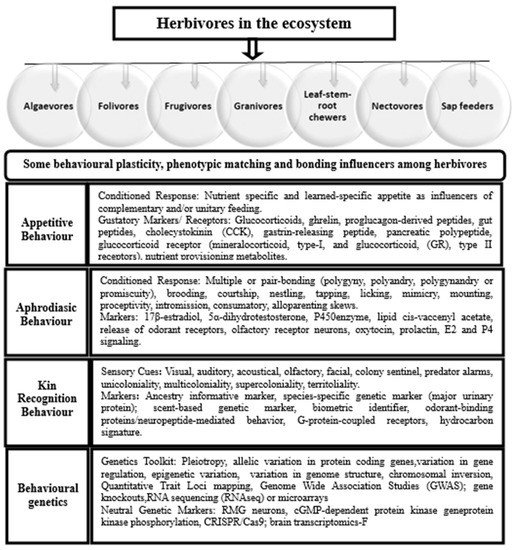1000/1000
Hot
Most Recent

The outbreak of severe acute respiratory syndrome coronavirus 2 (SARS-CoV-2) is a public health emergency that turns the year 2020–2021 into annus horribilis for millions of people across international boundaries. The interspecies transmission of this zoonotic virus and mutated variants are aided by exposure dynamics of infected aerosols, fomites and intermediate reservoirs. The spike in the first, second and third waves of coronavirus confirms that herd immunity is not yet reached and everyone including livestock is still vulnerable to the infection. Of serious concern are the communitarian nature of agrarians in the livestock sector, aerogenous spread of the virus and attendant cytocidal effect in permissive cells following activation of pathogen recognition receptors, replication cycles, virulent mutations, seasonal spike in infection rates, flurry of reinfections and excess mortalities that can affect animal welfare and food security. As the capacity to either resist or be susceptible to infection is influenced by numerous factors, identifying coronavirus-associated variants and correlating exposure dynamics with viral aerosols, spirometry indices, comorbidities, susceptible blood types, cellular miRNA binding sites and multisystem inflammatory syndrome remains a challenge where the lethal zoonotic infections are prevalent in the livestock industry, being the hub of dairy, fur, meat and egg production. This entry provides insights into the complexity of the disease burden and recommends precision smart-farming models for upscaling biosecurity measures and adoption of digitalised technologies (robotic drones) powered by multiparametric sensors and radio modem systems for real-time tracking of infectious strains in the agro-environment and managing the transition into the new-normal realities in the livestock industry.
| Host Species | Phylogenetic Genera of Coronaviridae Family | Designation of Viral Isolate/Prototype |
Implication of Infection |
|---|---|---|---|
| Domestic fowl (Gallus gallus domesticus) Family/Order: Phasianidae/Pangalliformes |
Chicken coronavirus (γ-coronavirus) |
Infectious bronchitis virus (IBV) strain; chicken-dominant coronavirus (CdCoV). | Replication of virions in the epithelial layers weaken the immune response, causes nutrient malabsorption, enterotropism and poor welfare. |
| Duck (Anas platyrhynchos) Family/Order: Anatidae/Anseriformes |
Duck coronavirus (γ-coronavirus) |
Infectious bronchitis virus (IBV), DdCoV/GD/2014 | Fatal, rapidly spreading viral infection of young ducklings. |
| Domestic geese (Anser anser) Family/Order: Anatidae/ Anseriformes |
Goose coronavirus (unclassified γ-coronavirus) | Goose coronavirus (GCoV); infectious bronchitis virus (IBV) | Precociously infected geese exhibit respirotropism, retarded growth, abnormal growth of feathers. |
| Pheasant (Phasianus colchicus) Family/Order: Phasianidae/ Galliformes |
Pheasant coronavirus (γ-coronavirus) |
Ph/UK/27/B287-4/99; Ph/UK/24/B114-4/99; Ph/UK/24/B307-12/98; Ph/UK/24/B88-4/99; γCoV/ph/China/I0623/17 (I0623/17), γCoV/ph/China/I0710/17 (I0710/17) | Distortion of respiratory tract and renal blot, nephritis, visceral gout, air sacculitis, conjunctivitis, sinusitis, splenomegaly, poor hatchability, excess mortality. |
| Domestic Pigeon (Columba livia domestica) Family/Order: Columbidae/ Columbiformes |
Pigeon coronavirus | N/A | Ruffled feathers, dyspnoea and excessive mucus from the beak, high susceptability to secondary infections. |
| Guinea fowl (Numida meleagris) Family/Order: Numididae/ Galliformes |
Guinea fowl coronavirus (GfCoV) | GfCoV/FR/2011; GfCoV/2014 | Neonatal respiratory distress syndrome, enteritis, low feed intake, poor flock performance, excess mortality. |
| Turkey (Meleagris gallopavo) Family/Order: |
Turkey coronavirus (TCoV) γ-coronavirus |
N/A | Bluecomb (enteric) disease and diarrhoea, poult enteritis complex or intestinal disorders at starter phase, anorexia, emaciation, morbidity/mortality (5–100%), poor egg quality (shell deformation, albumen thinning). |
| Host Species | Phylogenetic Genera of Coronaviridae |
Designation of Viral Isolate/Prototype |
Implication of Infection |
|---|---|---|---|
| Bats (Miniopterus spp.) Family/Order: Microchiroptera/Therapsid |
Bat coronavirus (α-coronavirus) |
Bat-CoV/China/A515/2005; Bat-CoV/P, Bat-CoV/133/2005, BM48-31/BGR/2008, HKU4, HKU5, Bat-CoV-273/2005, RsSHC014; Bat-CoV/HKU9–1/China/2007 | Diminishing bat genetic conservation. Reducing annual crop pollination, seed dispersal and pest control. |
| Cattle Family/Order: Bovidae/ Artiodactyla |
Bovine coronavirus (BCoV) | Isolate Alpaca, AH187, E-AH187, E-AH187-TC, E-AH65, E-AH65-TC, R-AH187, R-AH65, R-AH65-TC | Severe diarrhoea in neonate calves, winter dysentery in cattle, respiratory infections in calves. Silvopastoral grazing/ranching restriction, tacit weight loss, morbidity, emergency culling, low meat and milk yield. |
| Dromedary Camel | Camel coronavirus (α-coronavirus) |
DcCoV UAE-HKU23; MERS-like CoV |
Source of zoonotic Middle East respiratory syndrome (MERS-CoV) infecting unciliated bronchial epithelial cells, type II pneumocytes. |
| Feline Family/Order: Felidae/ Carnivora |
Feline enteric coronavirus (FeCoV) | Feline infectious peritonitis (FIP), UU4-54; feline APN, feline infectious peritonitis (FIP), virulent | Asymptomatic carriers experience seroconversion among cats. Biotypes replicate in macrophages, causing severe and lethal disease. |
| Giraffe (Giraffa camelopardalis) | Giraffe coronavirus (GiCoV) | CoV (GiCoV-OH3) US/OH3/2003, US/OH3-TC/2006 | Weight loss, malabsorption of nutrients and water due to diarrhoea, decline in tourism and economic outcomes for hospitality industry. |
| Human Family/Order: Hominidae/Primates |
Human coronavirus (β-coronavirus) |
Human CoV-OC43, HCoV-229E, HKU1, HCoV-NL63 | Induces acute respiratory distress syndrome, cytokine storm and multiple complications in immunocompetent adults and infants. |
| Mink (Neovison vison or Mustela lutreola) Family/Order: Mustelidae/Carnivora |
Mink coronavirus | WD1127, WD1133, MV1-Lu, NB3 SARS-CoV-2, NB7 SARS-CoV-2 | Raises secondary viral host, respiratory disease, emergency culling, high mortality. |
| Murine Family/Order: Muridae/ Rodentia |
Murine coronavirus | Murine hepatitis virus: MHV-1, MHV-3, MHV-JHM.IA, RA59/R13, RA59/SJHM, RJHM/A, SA59/RJHM | Receptor (CEACAM1) binds MHV S-protein to activate virus–cell membrane fusion A59 strain. It infects mice liver and brain, demyelinating disease peaking at about 1 month postinfection. |
| Pig | Porcine coronavirus (Δ-coronavirus, unsegmented) |
Porcine transmissible gastroenteritis virus (TGEV), porcine respiratory coronavirus (PRCoV); porcine haemagglutinating encephalomyelitis coronavirus (PHEV) | Infects ciliated bronchial epithelial cells and type II pneumocytes causing swine acute diarrhoea syndrome (SADS-CoV) enteritis among piglets or neonates, mortality. |
| Rabbit (Oryctolagus cuniculus/ Family/Order: Lagomorpha |
Rabbit coronavirus (β-coronavirus) |
RbCoV-HKU14 | Infects upper respiratory tract, sparing the lungs. Shortage of wool, meat, gourmet products. |
